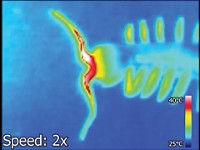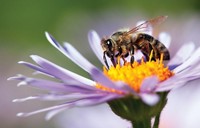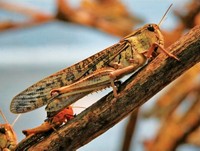Advertisement
Grab your lab coat. Let's get started
Welcome!
Welcome!
Create an account below to get 6 C&EN articles per month, receive newsletters and more - all free.
It seems this is your first time logging in online. Please enter the following information to continue.
As an ACS member you automatically get access to this site. All we need is few more details to create your reading experience.
Not you? Sign in with a different account.
Not you? Sign in with a different account.
ERROR 1
ERROR 1
ERROR 2
ERROR 2
ERROR 2
ERROR 2
ERROR 2
Password and Confirm password must match.
If you have an ACS member number, please enter it here so we can link this account to your membership. (optional)
ERROR 2
ACS values your privacy. By submitting your information, you are gaining access to C&EN and subscribing to our weekly newsletter. We use the information you provide to make your reading experience better, and we will never sell your data to third party members.
Science Communication
Newscripts
Hairworm horrors and talking tomatoes
by Emily Harwitz
August 7, 2021
| A version of this story appeared in
Volume 99, Issue 29
Why mantises make a splash

On a hot summer day in the blazing noon sun, you may find yourself wishing you could leap into a pool of water—especially if you’re a praying mantis infested with a parasitic hairworm. Once the unlucky mantis enters water, the long and threadlike hairworm bursts forth from the doomed mantis and breeds. Hairworms start life in the water, where they enter the guts of tiny insects that then become mantis meals. To complete its life cycle, the parasite needs to get back to the water. How the hairworm directs the mantis to water has perplexed scientists for over a century. But a team of researchers based in Japan has finally solved the puzzle: hairworms manipulate their hosts’ perception of light to drive them toward the polarized light that reflects off water (Curr. Biol. 2021, DOI: 10.1016/j.cub.2021.05.001).
“In Japan, and especially around my place, there are so many praying mantises that are infected by hairworms,” says Takuya Sato, an ecologist at Kobe University who led the study. “So many Japanese people have experiences” playing with praying mantises during the summertime and seeing the hairworms erupt, Sato muses, “but no one knew why the praying mantises just jump into the water by themselves.”
Recent studies have shown that some insects seek out or avoid water by navigating around the horizontally polarized light that reflects off water’s surface. Sato and colleagues thought this might be key. They first looked at how mantises reacted to light in a lab, then how mantises responded to water in a natural setting at different times of day.
They saw that mantises with hairworms preferred polarized light in the lab. And in the field, infested mantises leaped toward polarized light reflected from water almost 90% of the time, which “was pretty amazing to me,” Sato says. “We didn’t expect that.” Next, Sato plans to study how the hairworms are able to manipulate their hosts’ attraction toward certain kinds of light. “I personally dislike mantises, I have to say,” Sato tells Newscripts, “but with hairworms, the phenomenon is very interesting to me, so I’m very excited to work on that.”
Electrifying conversation

Can fruit communicate? A team of Brazil-based scientists recently found out that the answer is yes: fruits talk, and they do it through electrical signals (Front. Sustainable Food Syst. 2021, DOI: 10.3389/fsufs.2021.657401).
Gabriela Niemeyer Reissig of the Federal University of Pelotas hypothesized that, since nutrient- and chemical-laden sap can be sent only one way—from the plant to its fruits—perhaps the fruits were sending electrical signals to communicate important information back to the plant, like “I’m being eaten by a caterpillar!” The plant could then prepare itself for attack—for example, by releasing chemicals into the air that attract the caterpillar’s predators.
To find out, the researchers placed tomato plants in a Faraday cage and attached electrodes to the stalks connecting fruits to the main stem. Then they placed a caterpillar on a tomato fruit. After measuring the electrical responses before, during, and after the caterpillars had gorged for 24 h, the team used machine learning to find patterns in the signals.
Not only did the researchers observe distinct electrical signals when the fruits were being eaten, but unexpectedly, “we could differentiate the electrical signal from green fruit to red fruit,” Niemeyer Reissig tells Newscripts. “It was amazing.”
“People think of fruit as just an edible object,” says André Geremia Parise of the Federal University of Pelotas, who worked on the study, “but no—fruits are alive. They are part of the plant.”
Please send comments and suggestions to newscripts@acs.org.





Join the conversation
Contact the reporter
Submit a Letter to the Editor for publication
Engage with us on Twitter